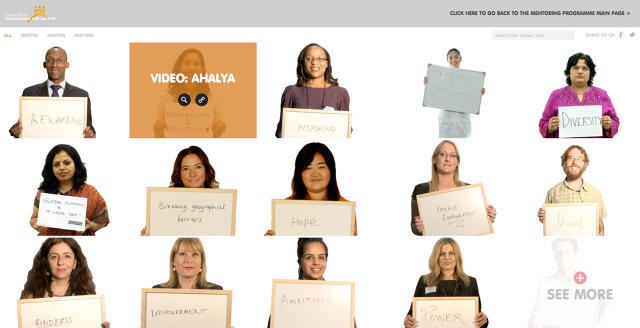Identifying attributes of natural youth mentoring relationships
Deutsch, N. L., Mauer, V. A., Johnson, H. E., Grabowska, A. A., & Arbeit, M. R. (2020). “[My counselor] knows stuff about me, but [my natural mentor] actually knows me”: Distinguishing characteristics of youth’s natural mentoring relationships. Children and Youth Services Review, 111, 104879. https://doi.org/10.1016/j.childyouth.2020.104879
Summarized by Ariel Ervin
Notes of Interest:
- Despite the evidence that indicates how natural mentoring relationships lead to many positive youth outcomes, there is still limited research that focuses on how natural mentoring relationships develop
- The current study aims to explore the factors that contribute to the growth of natural mentoring relationships
- Utilizes qualitative interviews with adolescents to better understand the attributes of naturally occurring relationships that progress into natural mentoring relationships
- Findings indicate that building trust, as well as intentional use of time and space, help relationships grow into natural mentoring relationships
- Conclusions suggest that teens are more likely to respond well to adults that exhibit a mutual trust, respect, and interest in them.
Introduction (Reprinted from the Abstract)
Adults play important roles in the lives of adolescents, serving as role models, sources of social support, and providers of social capital. Natural mentoring relationships (NMRs), relationships between adults and youth that rise to a level of significance for the youth, have a positive impact on youth outcomes in a number of academic, socioemotional, and health related areas. Yet despite the importance of NMRs to youth development, there is little research on how NMRs develop or what factors are associated with a relationship becoming an NMR. This study uses in-depth qualitative interviews with adolescents across five time points to explore the characteristics of youth-adult relationships that develop into NMRs, and the psychosocial processes and actions which transform a naturally occurring relationship into an NMR. Findings from our study suggest that by intentionally using time and space with youth as an opportunity to cultivate safe and authentic spaces and build trust, adults can encourage the development of NMRs with adolescents.
Implications (Reprinted from the Discussion)
Shared time and space is a key foundation for fostering the growth of NMRs. Yet it is not enough. Adults intentionally using the time they have with youth to build their relationships, seemed to support the development of other factors, such as trust and closeness, that in turn catalyzed relationships. This intentionality is reflective of past studies of youth-staff relationships at after-school centers (Hirsch, 2005, Hirsch et al., 2011) which found that unstructured time could be used beneficially for fostering NMRs between staff and youth and that an explicit focus by the adults on positive youth development appeared to support that.
Whereas sharing physical time and space was important, some youth also talked about what we came to call psychological time and space – the sense that the adult is there for them even when they are not physically present. This has strong foundations in the idea of secure attachment (Bowlby, 1969). The child’s sense of an adult as a secure base allows the child to go out into the world and explore, because they trust that the adult will be there when they need them (Ainsworth, 1973). The idea of their VIP “being there” for them even when not physically present seems to reflect this internal working model of relationships as stable and secure. This sense of psychological time and space could support the continuation of relationships over key transitions and potential disruptions (e.g., graduating high school, moving).
Trust was a common theme across youth’s descriptions of what made their VIP relationships important. Trust has long been hypothesized by researchers to be a characteristic of the kind of close relationships that can best promote positive outcomes in mentoring (Rhodes et al., 2006) and youth have also identified trust as a key quality of natural mentoring relationships (e.g., Munson, Smalling, Spencer, Scott, & Tracy, 2010). In a study of youth development programs, Griffith and Larson (2016) found that youth’s trust in program staff bolstered the benefits of the program, in part by increasing the youth’s use of the staff as mentors. Further, Griffith and Johnson (2019) found that adult staff at youth programs purposefully built trust in ways that reflect many of our findings: respecting youth, building rapport with youth, being consistent in their presence in youth’s lives, and occupying what they call a “nuanced role” in youth’s lives, reflecting some of the peer-adult boundary crossing that we found as well. From the youth’s perspectives, Griffith, Larson, and Johnson (2018) found that youth talked about three types of experiences with staff which contributed to the growth of trust: (1) staff supporting youth’s work on specific projects; (2) staff recognizing youth as having needs and interests beyond the program, and; (3) youth watching staff actions over time. This is similar to findings by Donlan and colleagues (Donlan et al., 2017) that trust in natural mentoring relationships between youth and staff in youth programs is fostered by key processes including respect, support, consistency, and information gathering and that these processes also promote youth outcomes. Prior findings from our larger study (Yu et al., 2019) revealed that trust was emphasized particularly by youth who were more anxious and/or avoidant in their relationships. Thus, trust may be a foundational quality of NMRs, but for youth who feel less secure in their relationships generally, trust may take on an especially important role. Trust, and particularly bi-directional trust, also reflects the concept of mutuality within the relationships (Lester et al., 2018, Rhodes, 2005), which has been identified by others as an important aspect of formal mentoring relationships.
To access this article, click here.














